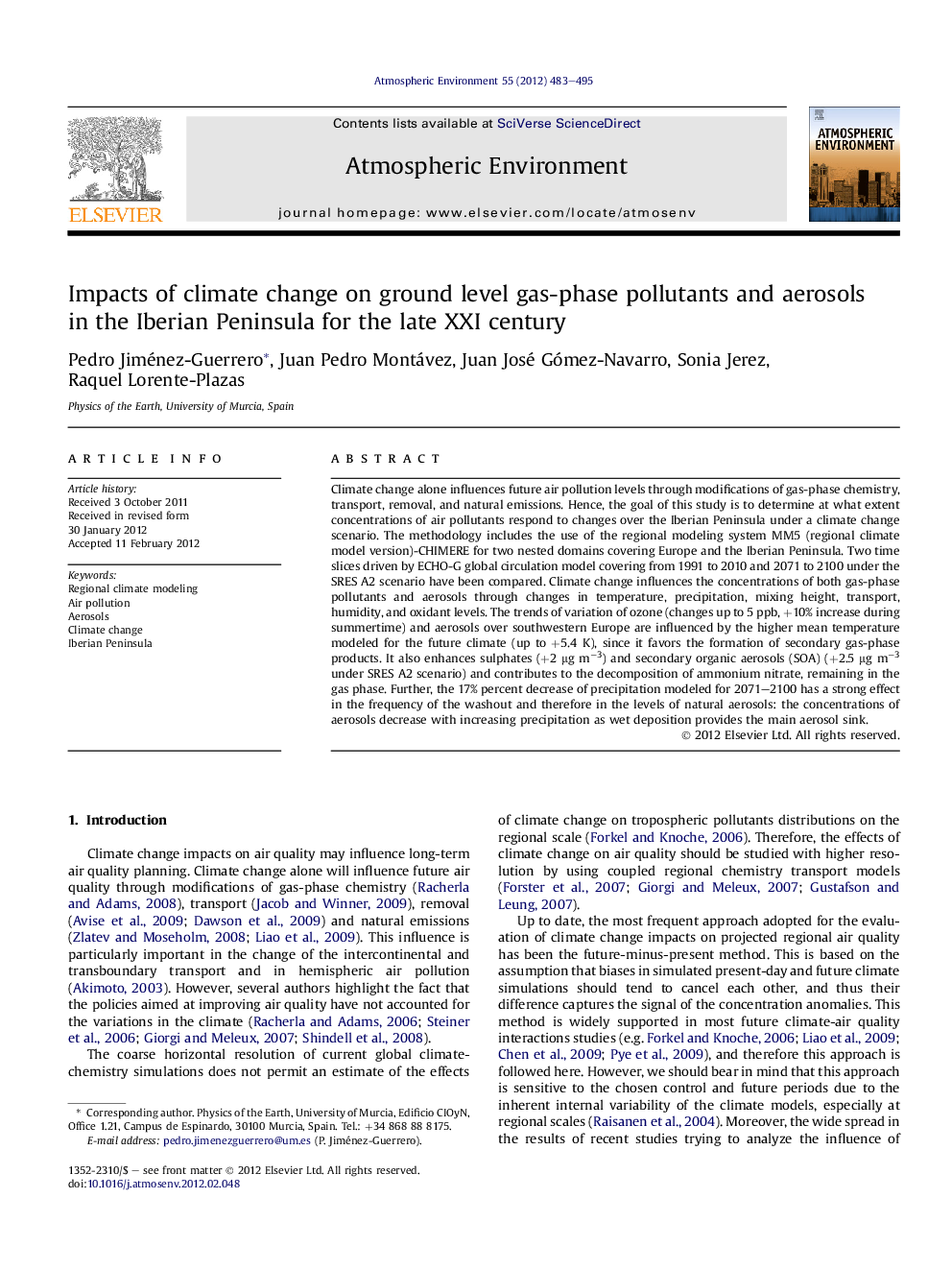| کد مقاله | کد نشریه | سال انتشار | مقاله انگلیسی | نسخه تمام متن |
|---|---|---|---|---|
| 4438972 | 1620416 | 2012 | 13 صفحه PDF | دانلود رایگان |

Climate change alone influences future air pollution levels through modifications of gas-phase chemistry, transport, removal, and natural emissions. Hence, the goal of this study is to determine at what extent concentrations of air pollutants respond to changes over the Iberian Peninsula under a climate change scenario. The methodology includes the use of the regional modeling system MM5 (regional climate model version)-CHIMERE for two nested domains covering Europe and the Iberian Peninsula. Two time slices driven by ECHO-G global circulation model covering from 1991 to 2010 and 2071 to 2100 under the SRES A2 scenario have been compared. Climate change influences the concentrations of both gas-phase pollutants and aerosols through changes in temperature, precipitation, mixing height, transport, humidity, and oxidant levels. The trends of variation of ozone (changes up to 5 ppb, +10% increase during summertime) and aerosols over southwestern Europe are influenced by the higher mean temperature modeled for the future climate (up to +5.4 K), since it favors the formation of secondary gas-phase products. It also enhances sulphates (+2 μg m−3) and secondary organic aerosols (SOA) (+2.5 μg m−3 under SRES A2 scenario) and contributes to the decomposition of ammonium nitrate, remaining in the gas phase. Further, the 17% percent decrease of precipitation modeled for 2071–2100 has a strong effect in the frequency of the washout and therefore in the levels of natural aerosols: the concentrations of aerosols decrease with increasing precipitation as wet deposition provides the main aerosol sink.
► We determine the response of air pollutants to climatic changes under SRES A2.
► Climate change alone enhances the formation of gas-phase pollutants and aerosols.
► The trends of variation for O3 and PM are influenced by the future higher temperatures.
► Temperature increases favor the formation of secondary gas-phase products.
► Changes in precipitation impact on the washout and on the levels of natural aerosols.
Journal: Atmospheric Environment - Volume 55, August 2012, Pages 483–495